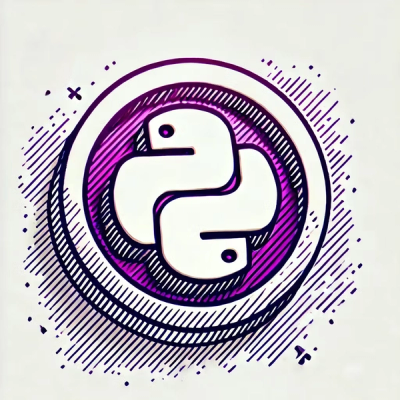
Research
PyPI Package Disguised as Instagram Growth Tool Harvests User Credentials
A deceptive PyPI package posing as an Instagram growth tool collects user credentials and sends them to third-party bot services.
SOund and Narrative Advanced Transcription Assistant
SONATA(SOund and Narrative Advanced Transcription Assistant) is advanced ASR system that captures human expressions including emotive sounds and non-verbal cues.
📚 See detailed features documentation
Install the package from PyPI:
pip install sonata-asr
Or install from source:
git clone https://github.com/hwk06023/SONATA.git
cd SONATA
pip install -e .
from sonata.core.transcriber import IntegratedTranscriber
# Initialize the transcriber
transcriber = IntegratedTranscriber(asr_model="large-v3", device="cpu")
# Transcribe an audio file
result = transcriber.process_audio("path/to/audio.wav", language="en")
print(result["integrated_transcript"]["plain_text"])
# Basic usage
sonata-asr path/to/audio.wav
# With speaker diarization
sonata-asr path/to/audio.wav --diarize
# Set number of speakers if known
sonata-asr path/to/audio.wav --diarize --num-speakers 3
General:
-o, --output FILE Save transcript to specified JSON file
-l, --language LANG Language code (en, ko, zh, ja, fr, de, es, it, pt, ru)
-m, --model NAME WhisperX model size (tiny, small, medium, large-v3, etc.)
-d, --device DEVICE Device to run models on (cpu, cuda)
--text-output Save transcript to text file (defaults to input_name.txt)
--preprocess Preprocess audio (convert format and trim silence)
Diarization:
--diarize Enable SOTA speaker diarization using Silero VAD and WavLM
--num-speakers NUM Set exact number of speakers (optional)
Audio Events:
--threshold VALUE Threshold for audio event detection (0.0-1.0)
--custom-thresholds FILE Path to JSON file with custom audio event thresholds
--deep-detect Enable multi-scale audio event detection for better accuracy
--deep-detect-scales NUM Number of scales for deep detection (1-3, default: 3)
--deep-detect-window-sizes Custom window sizes for deep detection (comma-separated)
--deep-detect-hop-sizes Custom hop sizes for deep detection (comma-separated)
📚 See full usage documentation
⌨️ See complete CLI documentation
SONATA leverages Whisper large-v3 to support 99+ languages across varying levels of accuracy. Languages like English, Spanish, French, German, and Japanese have excellent transcription performance (5-12% error rates), while other languages have good to moderate accuracy.
Key features of SONATA's language support:
🌐 See detailed language support documentation
SONATA can detect over 500 different audio events, from laughter and applause to ambient sounds and music. The customizable event detection thresholds allow you to fine-tune sensitivity for specific audio events to match your unique use cases, such as podcast analysis, meeting transcription, or nature recording analysis.
🎵 See audio events documentation
SONATA provides state-of-the-art speaker diarization to identify and separate different speakers in recordings. The system uses Silero VAD for speech detection and WavLM embeddings for speaker identification, making it ideal for transcribing multi-speaker content like meetings, interviews, and podcasts.
🎙️ See speaker diarization documentation
Contributions are welcome! SONATA offers multiple ways to contribute, including code improvements, documentation, testing, and bug reports. Our comprehensive contribution guide covers:
Whether you're an experienced developer or new to open source, we welcome your contributions.
This project is licensed under the GNU General Public License v3.0.
FAQs
SONATA: SOund and Narrative Advanced Transcription Assistant
We found that sonata-asr demonstrated a healthy version release cadence and project activity because the last version was released less than a year ago. It has 1 open source maintainer collaborating on the project.
Did you know?

Socket for GitHub automatically highlights issues in each pull request and monitors the health of all your open source dependencies. Discover the contents of your packages and block harmful activity before you install or update your dependencies.

Research
A deceptive PyPI package posing as an Instagram growth tool collects user credentials and sends them to third-party bot services.

Product
Socket now supports pylock.toml, enabling secure, reproducible Python builds with advanced scanning and full alignment with PEP 751's new standard.

Security News
Research
Socket uncovered two npm packages that register hidden HTTP endpoints to delete all files on command.